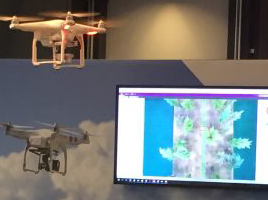
Every January, a group of global movers and shakers descend on the Swiss ski resort of Davos Klosters, to be part of the annual meeting of the World Economic Forum. The agenda earlier this year was “Mastering the Fourth Industrial Revolution.” The first three revolutions came with its introduction of mechanization, electricity, and IT. Now, Big Data, the Internet of Things, robotics, and other technologies are allowing for another revolution.

The WEF is usually ahead of the curve when it comes to such thinking. In this case, however, its cue came from a concept called “Industrie 4.0” that Germany has been pioneering for a few years. In 2013, Dr. Henning Kagermann, former CEO of SAP and now President of acatech, the German National Academy of Science and Engineering, told me in an interview for The Digital Enterprise about the excitement in Germany about Industrie 4.0. The book profiled many German companies across sectors sharing that excitement.
Nearly 5 years ago, I saw Jeff Immelt, CEO of GE stand next to a giant GEnx engine as he introduced his Industrial Internet concepts to the world. It was an effective way to present the fact that the engine is a massive data source which generates a TB of flight data a day. Next year, he stood next to a 50,000 lbs oil industry blowout preventer. Every year, he has similar examples of his locomotives, wind turbines, MRI scanners and other large products at GE’s Man+Machine events.
Japan, in prep for the 2020 Olympics, has its own version of excitement about changes in the industrial sector. China has similar with its “Made in China 2025” initiative. My last few books have been describing these moves for years.
Amazingly, the enterprise software industry does not appear to have heard these strong signals. Jason Blessing, CEO of Plex talked about Industrie 4.0 at his last user conference. Infor has showcased a few asset intensive customers like CERN in its marketing, but for the most part the industry has been focused on cloud this and HANA that.
So, it was invigorating for me to spend a few days in Gothenburg, Sweden at the IFS World Conference. The setting was ideal. It is the birthplace of Volvo, and 70% of Scandinavia’s industrial capacity is located within a 300 mile radius of the city.
It was striking to see IFS CEO Alastair Sorbie in his keynote mention “Field Service Management” as one of his top 4 priorities. There was all kinds of talk about complex assets and their long lifecycles. The “hot topics” sessions profiled case studies of maritime simulations and monitoring of worker fatigue in complex, expensive mining equipment. The “fun session” in the Labs area profiled a drone as it surveyed for trees in Sweden’s remote forestlands which downed utility lines. The metrics were more on the lines of ‘Overall Equipment Effectiveness” not “social media mentions”. The conversations were around “Digital Twins” and the dramatic differences between the consumer and the industrial Internet. There were sessions focused on asset maintenance including findings from academia around predictive maintenance and the changing organizational responsibility for the function. The products discussed were about “Operational Intelligence” and “Connectors” to handle data from thousands of sensors. Lots of blue collar grit. I soaked up the stuff.
Will IFS stay focused on this high end niche? The new private investors from EQT assured the analysts at the event it would. I saw a foray into retail and wholesale and some fretting that the oil and gas business was showing weak fundamentals. There was the mandatory cloud talk leveraging Microsoft Azure. My analyst colleagues wanted to hear more about multi-tenancy and use of Hadoop Spark for analyzing the big data sets. I was pleased with the use cases and the feature/function focus. I am optimistic they will stay focused on these industrial areas.
It may sound un-sexy but IFS is tackling parts of the industrial enterprise which require massive investments with lifespans measured in decades. And as GE has shown those assets have become a pathway for new business models as companies move from product and service to outcome based revenues. It is showing Industrial can blend with Digital.
Author: Vinnie Mirchandani




















